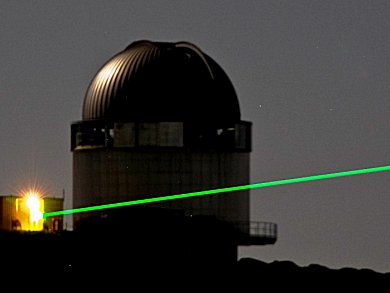Scientists around Gottfried Kirchengast, Wegener Center of the University of Graz, Austria, carried out an experiment to test infrared differential absorption spectroscopy as a way of making extremely accurate measurements of trace gases such as carbon dioxide and methane in Earth’s atmosphere. The approach links two satellites orbiting Earth: one acts as a transmitter and the otheras a receiver, with the atmosphere being probed as the beam travels between them. The atmospheric molecules affect the beam. This information can be used to calculate concentrations of trace gases, and potentially wind. Repeated at different altitudes, a vertical profile stretching from the lower stratosphere to the upper troposphere could be built up.
A successful test was performed for two weeks using the Observatorio del Teide on Tenerife run by the Instituto de Astrofisica de Canarias (IAC) as receiver and the Observatorio del Roque de los Muchachos, La Palma, as transmitter. Both stations are on top of volcanic mountains and separated by 144 km of Atlantic Ocean, making them one of the best sites in the world to conduct such experiments.
The infrared beam is invisible to the naked eye, but the impressive green guidance laser was used to record atmospheric turbulence alongside the infrared laser.
Image: © ESA
- ‘Star Wars’ laser offers new insight into Earth’s atmosphere
European Space Agency (ESA)





very nice,you have to apply the same method to escaping of gases and dust particles from our planet